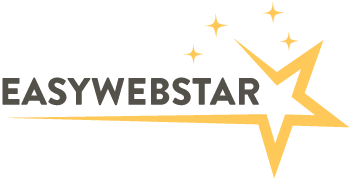Key Takeaways:
- The self-service kiosk transforms how guests interact with hotels, delivering unparalleled convenience and efficiency.
- Kiosks streamline operations like check-ins, allowing hotel staff to focus on tailored guest services.
- Robust data and research trends in the hospitality industry support adopting these technologies.
Among the burgeoning trends, the hotel check-in kiosk is leading the charge, redefining how guests experience staying at a hotel. These kiosks expedite check-in and align with the broader desire for personalized services and efficient guest management. As guests increasingly seek frictionless engagements, adopting such intuitive technologies is becoming synonymous with modern hotel operations.
In a world driven by digital advancements, guests today anticipate more than an essential service. They demand immediacy, accuracy, and personalization. Self-service kiosks take these expectations to the next level, offering a pathway to hassle-free transactions and interactions. The shift towards these digital solutions is not merely a trend—it’s a strategic move to enhance satisfaction and foster loyalty among tech-savvy travelers. These kiosks ensure streamlined service delivery and future-proof guest interactions by leveraging state-of-the-art user interfaces and connectivity.
The Rising Demand For Digital Solutions In Hospitality
A penchant marks modern travelers for convenience and efficiency. As such, they look for services that match their fast-paced lifestyles. Self-service kiosks address these demands by streamlining various hospitality services, from check-ins to check-out. For instance, kiosks empower guests by offering services at their fingertips, reducing waiting times significantly, and allowing them to manage their itinerary to the minute details. Such seamless digital transactions are becoming an industry benchmark as the demand for quick, reliable, and user-friendly services intensifies.
Furthermore, the post-pandemic era has underscored the importance of minimizing physical contact without compromising service quality. Self-service kiosks perfectly align with this new reality by offering a contactless yet interactive solution. Whether guests need to upgrade their rooms or find local attractions, kiosks provide a portal to customized experiences, enhancing both guest autonomy and satisfaction.
Benefits Of Self-Service Kiosks In Hotels
Efficiency & Convenience
Efficiency is the cornerstone of self-service kiosks. They operate round-the-clock, offering unparalleled flexibility. These kiosks let guests check in, secure room keys, and settle their bills without queuing at the reception. This shift elevates the guest experience and aligns with a lifestyle where time is of the essence. With automated tasks, guests enjoy a service that is as reliable as it is swift. The redundancy in traditional methods is removed, allowing the hotel staff to allocate their time more effectively, focusing on areas that enhance the guest stay.
Streamlining Operations
Self-service kiosks are pivotal in simplifying hotel operations. Automation of routine tasks relieves staff from the grind of administrative duties, thereby reallocating resources to more personalized guest interactions. This transformation lets hotel staff engage with guests personally, offering customized recommendations and ensuring a memorable stay. The result is a balanced environment where technology automates efficiency while humans foster personal connection and service excellence. Embracing such technology leads to more robust operational workflows and maximizes the use of human resources to create unforgettable guest experiences.
Data Collection & Personalized Services
The insights gathered through kiosk interactions open avenues for enhanced guest personalization. As guests interact with kiosks, hotels can collect valuable data on preferences and behaviors—tools essential for tailoring unique experiences. Research by Hotel Management supports the strategic use of data analytics to cater to guest nuances, leading to improved hotel services that genuinely resonate with individual guests. By understanding specific guest expectations, hotels can mold their offerings to exceed them, resulting in high contentment and guest loyalty.
Real-Life Applications & Case Studies
Practical applications of self-service kiosks are numerous and varied. Marriott International, for instance, exemplifies effective utilization by incorporating kiosks that allow guests to complete check-in procedures in under a minute. The technology is not confined to large hotel chains alone; boutiques and niche accommodations also benefit from employing kiosks to offer bespoke services that capture the essence of personalized hospitality. These success stories underscore kiosks’ integral role in revolutionizing hotel operations. By investing in such technologies, hotels bolster their service offerings and cultivate an innovative brand image.
The Impact On Hotel Staff & Customer Satisfaction
Introducing kiosks juggernauts efficiency and satisfaction—both for guests and hotel employees. By alleviating the burden of overseeing routine check-ins, staff are free to focus on high-touch interactions that enrich the guest experience. The outcome is a dual win: employees feel more fulfilled with their roles focusing on hospitality, and guests receive a service crafted to their expectations, skyrocketing overall satisfaction ratings and increasing hotel loyalty. The symbiosis between technology and human service redefines the hospitality landscape, crafting a harmonious blend of efficiency and warmth.
Addressing Challenges & Implementation Considerations
While the advantages of kiosks are clear, the path to their successful deployment is fraught with challenges. Implementing kiosk technology requires investment and consideration of numerous factors—including ensuring the system is intuitive for all users, including non-tech-savvy guests. Hotels must also maintain solid technical and customer support to address issues promptly. These challenges are surmountable, especially with a strategic approach focused on long-term guest satisfaction and technological adaptability. Engaging staff in transition training and providing comprehensive user guidance ensures that staff and guests benefit from this transformative technology.
Future Trends & Innovations In Hospitality Kiosks
As the scope of technology widens, the evolution of kiosks is anticipated to include features such as artificial intelligence and augmented reality. These innovations promise to elevate the guest experience further, with AI offering personalized recommendations and AR providing immersive city guides. Such forward-thinking technologies can revolutionize the hospitality sector, setting new benchmarks for guest engagement and service delivery.
Conclusion
Self-service kiosks are a pivotal component in the hospitality industry’s transformation. By efficiently bridging the gap between guest expectations and actual service delivery, they redefine standards and set a new bar for guest experiences. As the sector moves forward, embracing technology like kiosks will not just be a competitive edge but a necessity in delivering exceptional, anticipatory guest services. Integrating technology, done right, not only boosts operational efficiency but also enriches the guest journey, laying the framework for future innovations in hospitality.










